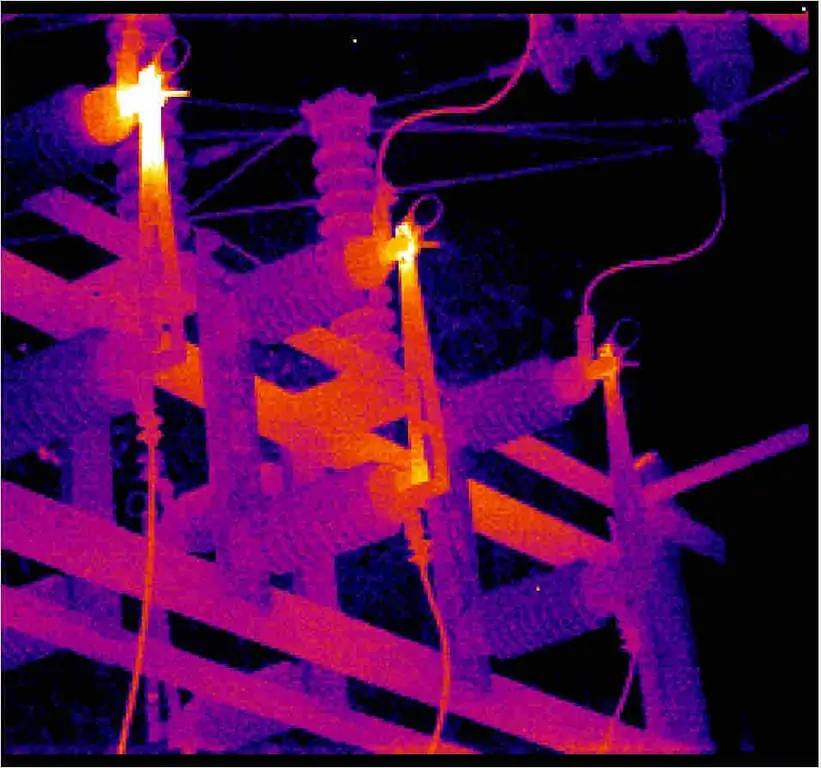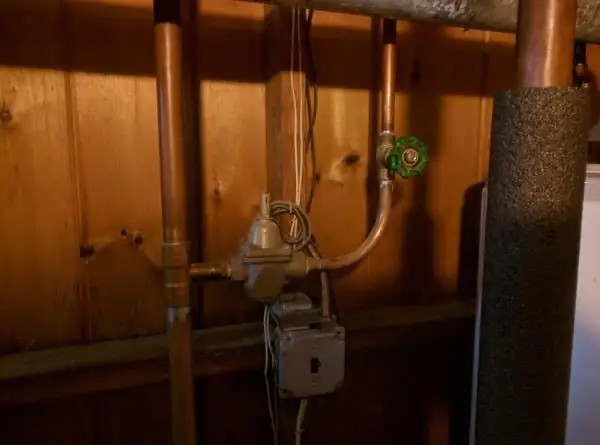2026 Author: Howard Calhoun | [email protected]. Last modified: 2025-01-24 13:10:45
In the development of fire protection systems for buildings and structures, special attention is paid to the means of protection against fire. The combination of sprinkler and deluge installations provides a reliable fire barrier, minimizing property damage. At the same time, from the point of view of protecting people, the efficiency of the smoke exhaust fans, which reduce the likelihood of suffocation and poisoning with poisonous gas, will be of paramount importance.
The principle of operation of the equipment
Fans of this type cannot be considered outside the general context of fire protection. The task of the smoke exhaust system as such will be the timely removal of combustion products from the target room (one or more). As a minimum, a technical and structural infrastructure should be provided that, in principle, ensures the possibility of moving smoke. It is formed by a network of air ducts, at the ends or at the beginning of which ventilation power plants are placed. These are shafts that have direct access to the outside of the building. The electrical stuffing of the equipment is installed in the smoke exhaust fan cabinet, towhich is supplied with a system of fire detection sensors and an electric motor. At the moment of registering a signal about the presence of fire or smoke in the room, the control panel automatically sends a command to install a fan, after which the process of air circulation starts with the removal of harmful gases and other combustion products.
Axial fans

The simplest version of the power plant that circulates air flows. This fan has a compact size and high performance, so if it is technically possible to install it, it is recommended to choose this design from the very beginning. The functional parts of the equipment are an axis of rotation with a cylindrical body and several blades. The most common arrangement is "impeller - electric motor". The advantages of an axial smoke exhaust fan include the possibility of mounting on ceilings and even in a foundation base if there are air duct channels that are appropriate in terms of characteristics.
Calve fans

The best option for complex chimney systems with channel infrastructure. The unit consists of a metal spiral casing, an engine and an impeller. For installation, a rigid supporting structure is also provided, on which the fan is mounted. The main advantage of such models can be called functionality. In most cases, the radial smoke exhaust fan allowsstructural ability to rotate the body. Both during the installation of the exhaust pipe and during further operation, the direction of the housing can be adjusted to the desired direction at an optimal angle relative to the central ventilation line. The layout inside the structure is usually done according to one scheme, in which the carrier base of the impeller is mounted directly on the motor rotor.
Classification by location

Fans for smoke extraction systems are mounted both indoors and outdoors. The most common are wall structures, which are often installed in technical rooms. Outside, roof smoke exhaust fans are usually used, which are characterized by high performance with support for exhaust pressure up to 1500-1800 Pa. Moreover, due to the free space on the roof, the installation of entire fan complexes, which are formed from several units, is practiced. The smoke can be directed in different directions or straight up.
Equipment control
Control of the workflow is provided through the electrical cabinet mentioned above. As a rule, such boards provide switching circuits for 220 V with a maximum voltage of up to 400 V. The smoke exhaust fan is directly controlled manually, automatically or remotely. In the simplest configurations, the operator, at the moment of detecting fire signs, puts the unit into operation mode through the cabinet switch.

Automatic control method involves connecting fire and smoke sensors, which transmit the corresponding signal to the control panel of the cabinet, after which the fan is activated regardless of the operator's actions.
In the remote operation mode, the person in charge can start the operation of the equipment using a special remote control or radio tag from a distance. For automatic and remote control, it is necessary to pre-configure the equipment with the programming of its operation algorithms.
Fields of application for smoke exhaust fans
There are different equipment configurations that make it possible to use it in both domestic and industrial facilities. For example, many manufacturers produce small-sized units designed specifically for domestic supply and exhaust systems. The user only needs to mount a compact fan in the shaft and connect it to the mains.
As for the industrial sector, large facilities are provided with local smoke exhaust fans to maintain fire safety in work areas, welding areas, spray booths, etc. In public buildings, high-performance hoods are used that serve multi-meter networks of air ducts. General circulation fans, for example, are used in schools, restaurants, libraries, office buildings, etc.

The nuances of choosing a fan
Besides design features, dimensions and systemmanagement, it is important to consider performance. These include engine power, performance properties of materials, the possibility of contact with aggressive air mixtures, etc. As for the power potential of the electric motor, it averages 500-3000 W. This range includes both household and industrial units with a blade speed of about 900-1200 rpm. By the way, the price of a smoke exhaust fan will also largely depend on performance, which on average varies from 7 to 15 thousand rubles.
It is equally important to calculate the possible loads under which the unit will operate. First of all, it concerns temperature. An average fan for a smoke exhaust system can withstand about 400-600 °C. But the concentration of harmful materials, explosive gas mixtures, dust and aggressive vapors is also taken into account. The IP54 design protection class is considered optimal, which allows the content of impurities in the working environment up to 100 mg/m.

Conclusion
The fundamental design of the considered fan installations may seem outdated and impractical to use. Especially against the backdrop of the emergence of new multifunctional and compact fire protection systems. But is there an equivalent alternative to smoke exhaust fans in terms of minimizing the harm from combustion products? The only alternative is a static ventilation system, which does not involve smoke extraction at all. Against,such equipment blocks the ashes in one room, stopping the supply of oxygen as a flame stimulator. The choice of a particular system should be selected based on the operating conditions, the target characteristics of the premises, etc.
Recommended:
Indicators without delay and redrawing: types, principle of operation, pros and cons of application, expert advice

There is a wide variety of different tools in trading: graphical constructions, technical indicators, automated programs, trading signals and much more. To successfully apply them in trading, you need to understand how they work. Indicators without delay and redrawing are especially popular with traders
Pension fund - what is it? Main functions and principles of operation

What is a pension fund? And what types of pension funds are there? Why are they needed at all?
Thermal imaging control of electrical equipment: concept, principle of operation, types and classification of thermal imagers, features of application and verification

Thermal imaging control of electrical equipment is an effective way to identify defects in power equipment that are detected without shutting down the electrical installation. In places of poor contact, the temperature rises, which is the basis of the methodology
Main types and types of business plans, their classification, structure and application in practice

Each business plan is unique, because it is developed for certain specific conditions. But you need to familiarize yourself with the features of various types of business plans in order to understand their key features. Experts recommend doing this before compiling your own similar document
Low pressure heaters: definition, principle of operation, technical characteristics, classification, design, operation features, application in industry

Low pressure heaters (LPH) are currently used quite actively. There are two main types that are produced by different assembly plants. Naturally, they also differ in their performance characteristics

